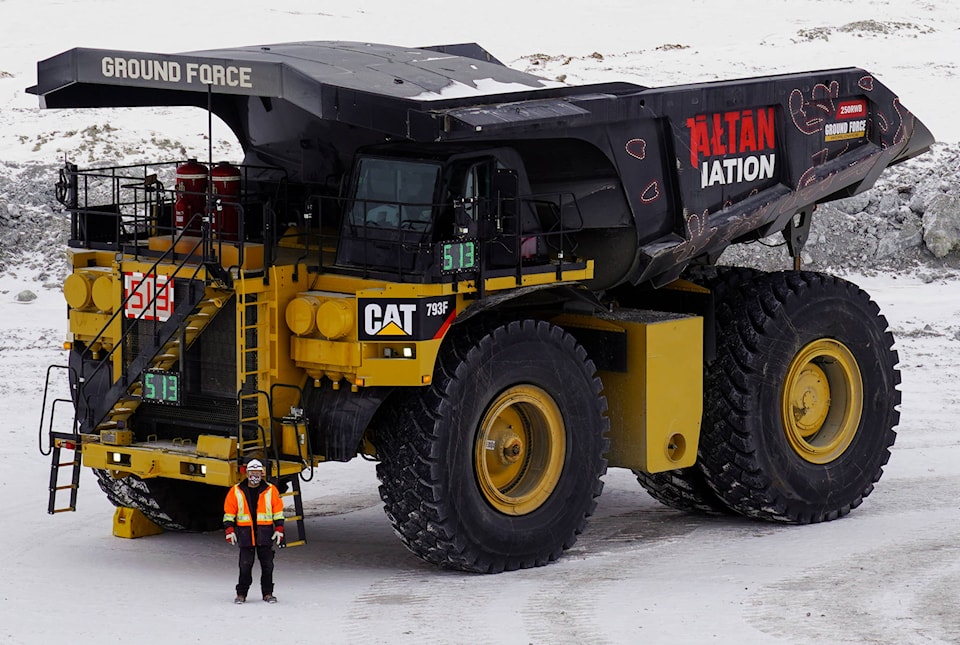An alloy is one metal mixed with a more valuable metal to give durability or some other desired quality. Alloys are everywhere around us, but sometimes they are not what you may expect.
The province of British Columbia and our mining sector can also be considered an alloy that, when combined and collaborating, is better and stronger together. The B.C. mining sector has a long history of being an important innovator and economic stimulant for our economy; indeed, there is a reason why it has been deemed an essential business during the COVID-19 pandemic.
B.C. is blessed with a bounty of minerals and metals, including copper, silver and gold, which are vital components in our smart devices, the homes we live in and vehicles that transport us, and even healthcare technology such as ventilators and anaesthesia machines. Thousands of high-paying jobs, in all regions of the province and in countless Indigenous communities, provide for B.C. families.
B.C.’s mining industry is evolving into even greater strength by delivering the minerals and metals we need on our path to decarbonization and clean energy. Copper, silver, molybdenum and zinc are crucial to our electric bikes, cars, buses and trucks, the production of solar panels and wind turbines and the electrification of our world. As an electric car requires four times more copper than a regular gas-powered car, our clean future will depend on the innovation and growth of B.C. mining.
B.C. mining and mineral exploration, when combined with local Indigenous community engagement, continues to deliver a desired quality for our future. A new alloy is being formed, enabling a path toward reconciliation with First Nations peoples.
To understand the relationship-building and the Indigenous-and-mining economic opportunity, one needs to look no further than the Tahltan Nation, exploration companies such as Skeena Resources, and various stakeholders working together in the spirit of reconciliation to create a new and stronger industry, one based on sustainability and community. It is a template for the future of the industry in our province.
Reaching and maintaining the highest environmental, social, and governance standards, including respecting the United Nations Declaration on the Rights of Indigenous Peoples (UNDRIP), is no longer an option. It is a requirement. The BC Regional Mining Alliance (BCRMA) is a regional partnership between the Nisga’a Nation, industry, and provincial government representatives aimed at creating sustainable investment opportunities in the Golden Triangle. The BCRMA is a leading example of the type of collaboration needed to move forward with the economic opportunities enabled through reconciliation.
During the COVID-19 pandemic, the Tahltan Nation has led the way in organizing numerous mining companies working in their lands to come together to establish best practice for the mining industry in navigating COVID-19. The Tahltan Nation Emergency Management Committee and various exploration and mine sites continue to work closely together to ensure COVID-19 does not reach the isolated and vulnerable Tahltan communities of Iskut, Dease Lake and Telegraph Creek. Together, the effects of COVID-19 have been mitigated and no Tahltans have been lost to COVID-19, a true testament to the work being done together during this crisis.
Indeed, like good neighbours, there are other examples of banding together during emergencies. Recently, when the Telegraph Creek road was washed out, Newcrest Mining, Newmont and Skeena Resources all quickly pitched in to ensure Tahltan people were able to get home and that food and fuel were able to get in and out of Telegraph Creek by air.
Stronger together, minerals and metals are a foundational part of our past and a critical part of our clean future. B.C. is and will remain a world hub for resources and resource knowledge and it is our expertise that will lead the way in reconciliation and sustainably developing the metals we need to power a green economy, here in B.C. and around the world.
With the recent remains discovered at the Kamloops IRS, we stand in unity with all of the Indigenous families and loved ones across the country whose lives are affected by an unjust system.
Kendra Johnston is president and CEO of the Association for Mineral Exploration; Justin Himmelright is vice president of sustainability for Skeena Resources
